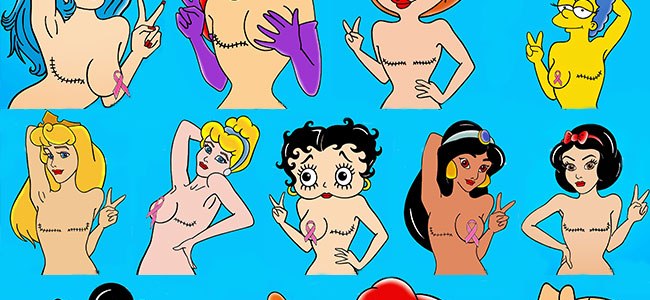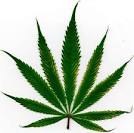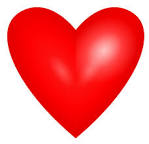“What don’t you like about your breasts,” the plastic surgeon asked.
“Apart from the fact they’re trying to kill me?”
I’m sitting in the surgeon’s office, squeezing a silicone implant as if it was a stress ball. It’s squishy with a fair bit of heft for something the size of a flattened out orange.
Nobody tells you that about implants, that they’re flat-ish. I was expecting them to be round and firm, maybe because bad boob jobs look like you’ve stuck a rockmelon on your chest. And it’s not a one-shape-fits-all situation. You can get teardrop shaped ones with different widths at the base and different projections, so they can stick out a little, a bit or a lot.
I get measured up and choose the ones that best match my natural breasts, 445CC, mid projection, wider base.
“Do you want to go smaller, bigger, have them sit differently?” he asks.
“No, I want them to look as much like mine as you can make them.”
I liked my breasts, before I found out I had cancer. After an angst ridden period in my teens when I was teased about being flat chested, I grew into my chest. They were the right size for my small frame; big enough to know they were there, small enough that I could go braless when the outfit demanded it and I could always go a push-up bra when I needed extra oomph.
And they were symmetrical. Same size, same shape, nipples in line and both pointing in the right direction. I didn’t appreciate how rare this was until I was diagnosed and all the doctors and nurses who examined me commented on it.
I didn’t expect to be here, in this room, picking out a new chest. I’d originally had a lumpectomy, with a neat little scar that arched a few centimetres above my left nipple and felt a huge sense of relief that I didn’t need a mastectomy.
After all, I was pretty attached to my chest.
When the BRAC 2 diagnosis came in, I knew they had to go. But it still wasn’t an easy decision. Breasts are such a visible part of womanhood and I was cutting mine off. Not only would I lose all sensation but I would never be able to breastfeed. What would the new ones look like? What would they feel like? Would I be able to look at myself naked in the mirror when this was all over? Could I stand to have anyone else look at me?
Then there are the questions of what kind of reconstruction I wanted.
Contrary to popular belief, a recon isn’t the same as a boob job. You can’t simply slide an implant underneath a natural breast because you’ve taken away all the tissue in the mastectomy, so you need to find a place to put it.
One option is expanders. Think of it as reverse braces for your chest, but instead of tightening the teeth these literally expand your chest wall. You need surgery to insert the expanders, then every few weeks they’re pumped up to the desired size. It’s as painful as it sounds. Once there’s enough room for the implants, you need another surgery to swap out the expanders.
If you don’t go expanders, you need to find a way to keep the implants in place, seeing as there’s no natural breast to do the job. Lat dorsi reconstructions, using a muscle on your back, is an option and leaves you with “angel wing” scars on your back. Or you can use a mesh, made of either pig or cow membrane or synthetic materials to keep it in place.
If you don’t fancy implants, they can use fat from your stomach, inner thighs or butt to build new boobs.
I wanted to minimize surgeries and chose a mastectomy with immediate straight implant recon with mesh. I thought that I would have to fight my case, but my plastic surgeon was all for it. My radiation oncologist less so.
I had my mastectomy and recon post chemo, pre radiation. But radiation needs to be done within 12 weeks of finishing chemo and she was concerned that if I had complications, I wouldn’t be able to start on time. But my plastic surgeon went in to bat for me and the radiation onc came around.
Why not wait until after radiation? Well radiation permanently damages the skin. We’re talking serious burns and any surgery on the area, even years later, will be deemed higher risk.
Surgery after radiation increases risk of infection.
Radiation before surgery increases risk of capsular contracture. This is where scar tissue forms around the implant, making it hard and misshapen.
I had two medical opinions on this.
“It’s a less than 20 per cent chance, if I was a betting woman I’d take that bet.”
“The risk is one in five, so that’s quite high.”
I took the risk.
At my final check up, when the bruising and swelling had subsided, my surgeon was positively giddy with glee.
I didn’t get it. I pointed out everything that was wrong with them; they were hard, they weren’t the same shape, the nipples weren’t in line, they were dimpled rather than smooth and sometimes, when I moved, I could see the implant collapse in on itself.
He was very patient with me.
They were hard because there was no tissue between implant and skin, which is also why the dimples on the implant weren’t smoothed out and the animation, when it collapses, is something all implants do but is more pronounced because of the lack of tissue. Radiation had caused the left side to swell which is why it was rounder than the right and the lumpectomy meant that the nipples weren’t in line before he got to them.
“They’re never going to be the same, but you’ve had the best possible result,” he said.
“You have what everybody wants.”
Looking at other reconstructions, I know he’s right, but it still took me a long time to not hate on them.
The surgeons – breast surgeon for the mastectomy, plastic for the recon – went in from the crease under my breast instead of cutting across from my underarm, a more difficult surgery that gives a better cosmetic result because the scar is hidden.
It was a skin sparing mastectomy, which saved my nipple and further reduced scarring. I liken it to scooping out the flesh from a passionfruit, the insides are gone but the shell is mostly unscathed except for that one big cut.
They’re no longer symmetrical, but they are the same size.
If you saw me in the communal change rooms at a sample sale, you probably wouldn’t look twice. You might think boob job, because they sit higher than they should for a woman in her mid 30’s, but you wouldn’t guess it’s all just skin and silicone.
Perspective has come over time. It’s been about 18 months since my surgery and I’m OK with looking at myself naked in front of a mirror. I’m OK with my husband seeing me. I’m OK with getting changed in communal dressing rooms.
Although my new breasts are a poor substitute for the originals, at least these ones aren’t trying to kill me.


